
By Kasey Cantwell - NOAA Office of Ocean Exploration and Research
September 24, 2017
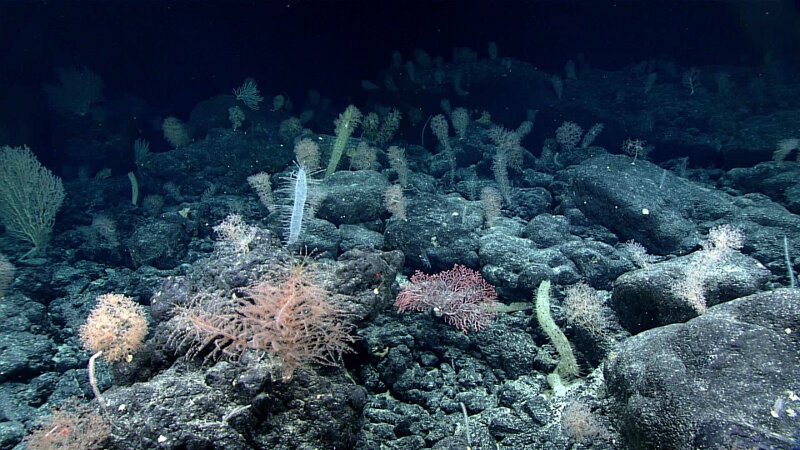
The landscape views at a number of seamount summits visited in the Musicians Seamounts were similar to this one. Image courtesy of the NOAA Office of Ocean Exploration and Research, Deep-Sea Symphony: Exploring the Musicians Seamounts. Download larger version (jpg, 1.7 MB).
Today was our last dive in the Musicians Seamounts during the Deep-Sea Symphony expedition. We have had two amazing weeks conducting the first-ever remotely operated vehicle (ROV) exploration in this region. One of the main objectives of this cruise was to locate, map, and characterize deep-sea coral and sponge habitats.
We’ve also completed other objectives for this cruise. We conducted the first-ever midwater exploration in the Musicians Seamounts with two full days of ROV exploration and four rounds of midwater transects at the conclusion of our benthic dives and collected valuable EK60 sonar data about biomass in the water column every evening. All of this helps us better understand one of the least explored biomes on the planet. Overnight operations not only provided information about life in the midwater, but revealed new features as we expanded bathymetry coverage from the Okeanos Explorer mapping cruise to the Musicians Seamounts.
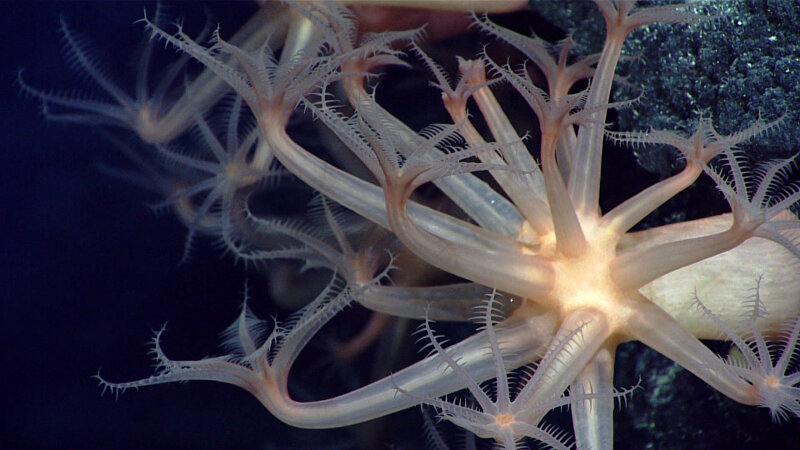
At a couple different sites, like Liszt Seamount and Beethoven Ridge, mushroom corals, like these Anthomastus, were common Image courtesy of the NOAA Office of Ocean Exploration and Research, Deep-Sea Symphony: Exploring the Musicians Seamounts. Download larger version (jpg, 1.3 MB).
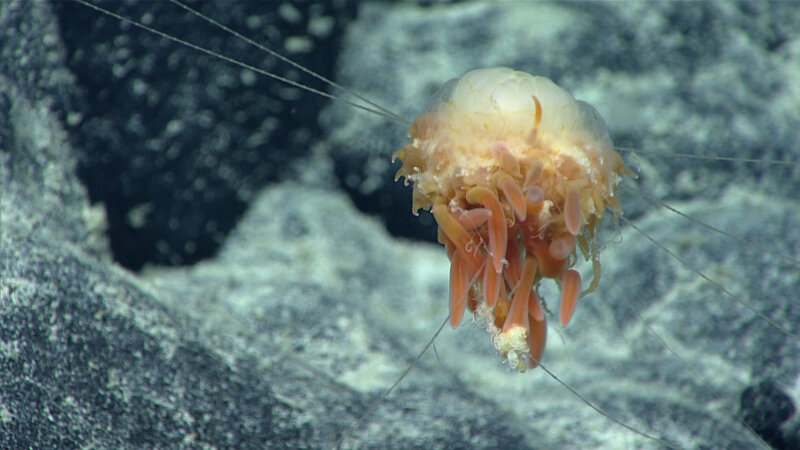
Dandelion siphonophores, like this one observed at Gounod Seamount, are always a treat to see. Image courtesy of the NOAA Office of Ocean Exploration and Research, Deep-Sea Symphony: Exploring the Musicians Seamounts. Download larger version (jpg, 935 KB).
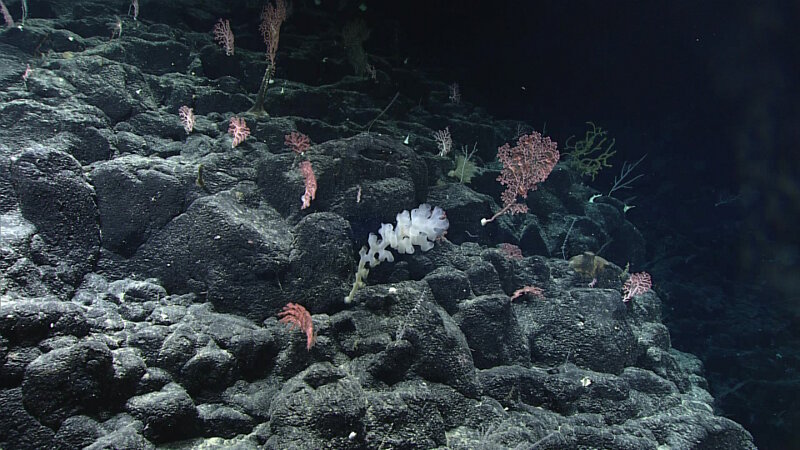
It is always exciting to see small, young corals in high density, like we saw at Rapano Ridge, as it is an indication of healthy populations. Over the next hundreds of years, this community will grow and change and potentially end up looking like one of the communities of large corals we observed upslope on this dive. Image courtesy of the NOAA Office of Ocean Exploration and Research, Deep-Sea Symphony: Exploring the Musicians Seamounts. Download larger version (jpg, 1.4 MB).
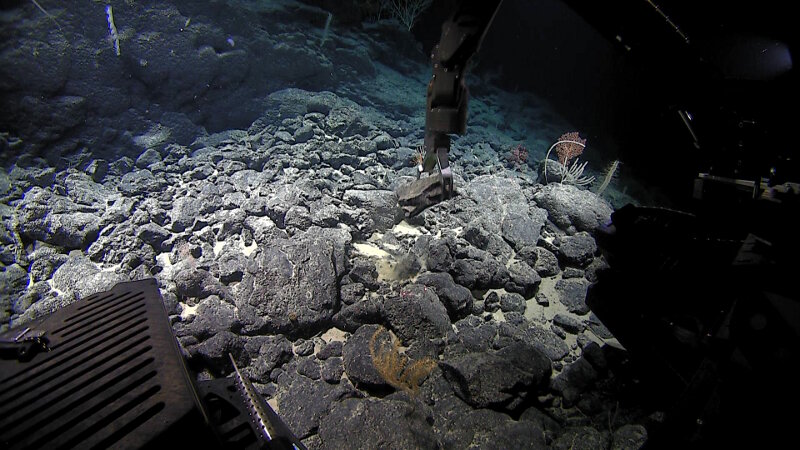
Rock samples can tell us a lot about the geologic origin of the seamount or ridge they were collected from and can help us figure out how a feature fits in with the puzzle of the Musicians Seamounts. We can also use information about rock age and composition to see how this region fits with the rest of the seafloor of the Pacific. Image courtesy of the NOAA Office of Ocean Exploration and Research, Deep-Sea Symphony: Exploring the Musicians Seamounts. Download larger version (jpg, 1.2 MB).
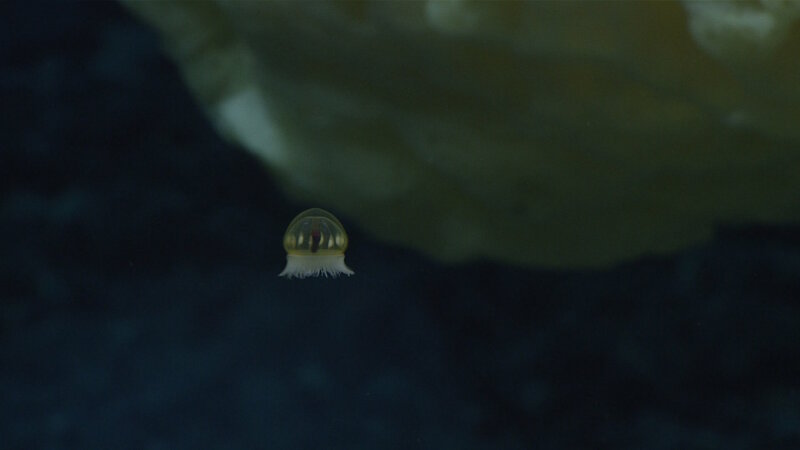
So far during the expedition, we have had several “bonus” observations of water column fauna, like this jellyfish observed at Sibelius Seamount. Image courtesy of the NOAA Office of Ocean Exploration and Research, Deep-Sea Symphony: Exploring the Musicians Seamounts. Download larger version (jpg, 600 KB).
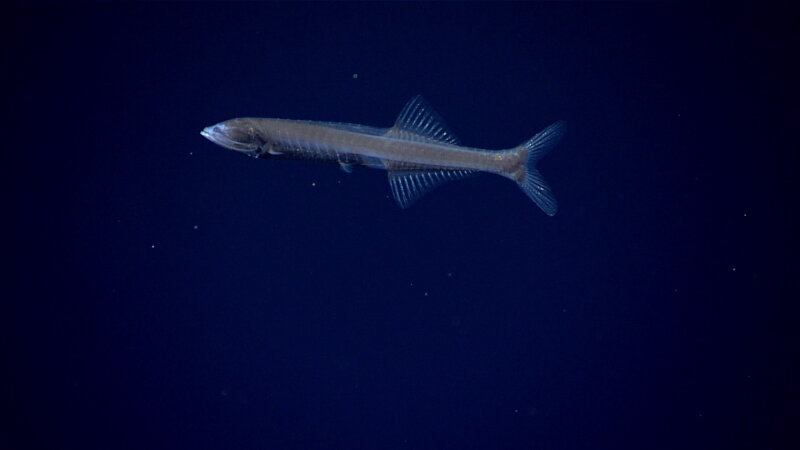
One of the most abundant vertebrates on earth, Cyclothones were a common fauna observed during our midwater exploration in the Musicians Seamounts. Image courtesy of the NOAA Office of Ocean Exploration and Research, Deep-Sea Symphony: Exploring the Musicians Seamounts. Download larger version (jpg, 560 KB).
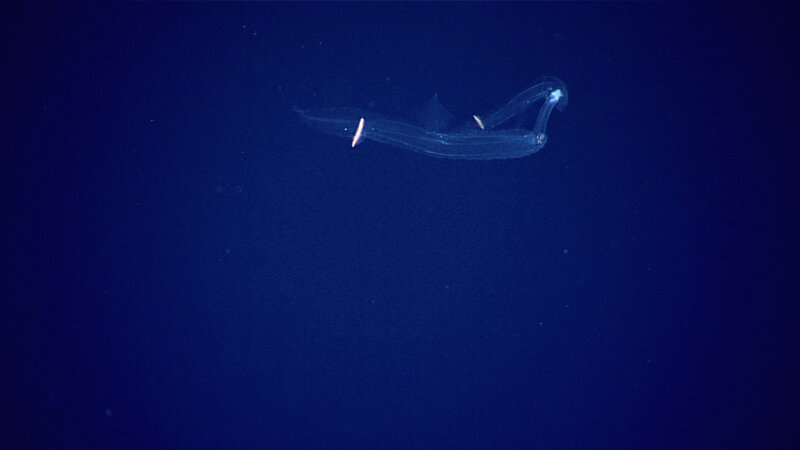
Due to the challenges of working in the deep sea, we don’t often have the opportunity to observe life history events. These two sea elephants were spotted on during our second full day of water column exploration. Our science team was unsure whether this pair was mating, or if we were witnessing one predating upon the other, or something else entirely. Image courtesy of the NOAA Office of Ocean Exploration and Research, Deep-Sea Symphony: Exploring the Musicians Seamounts. Download larger version (jpg, 818 KB).
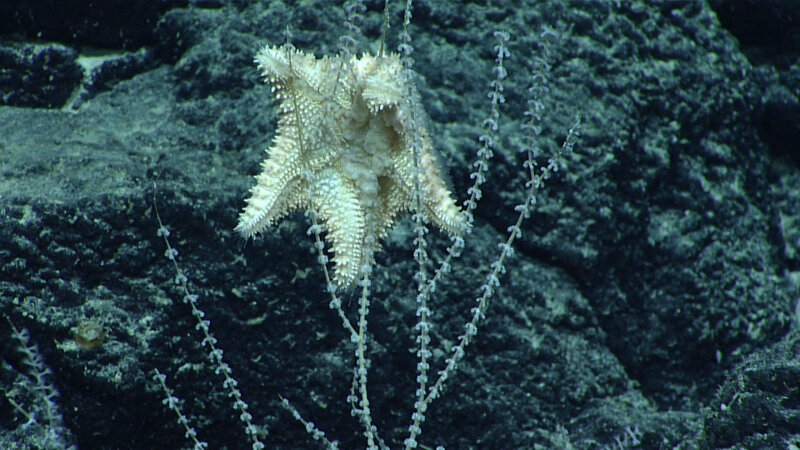
Observations of predation in the deep sea are often rare and always exciting for our team. However, on nearly every dive in the Musicians Seamounts, we observed at least one sea star predating upon coral. Here, a Hippasteria sea star has engulfed a branch of Primnoid coral while it digests the coral’s flesh. Image courtesy of the NOAA Office of Ocean Exploration and Research, Deep-Sea Symphony: Exploring the Musicians Seamounts. Download larger version (jpg, 1.4 MB).
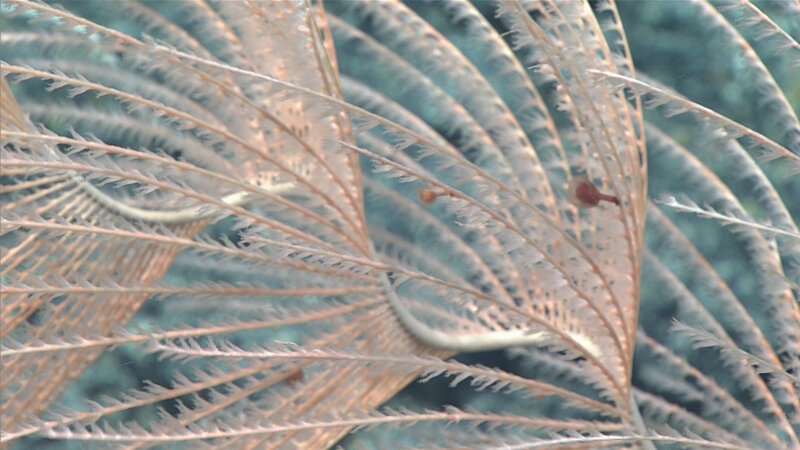
During our ROV dives in the Musicians Seamounts, we observed multiple instances of this once-thought-to-be rare jellyfish predating upon a coral. Here, the jellyfish are eating Iridogorgia polyps at Liszt Seamount. Image courtesy of the NOAA Office of Ocean Exploration and Research, Deep-Sea Symphony: Exploring the Musicians Seamounts. Download larger version (jpg, 972 KB).
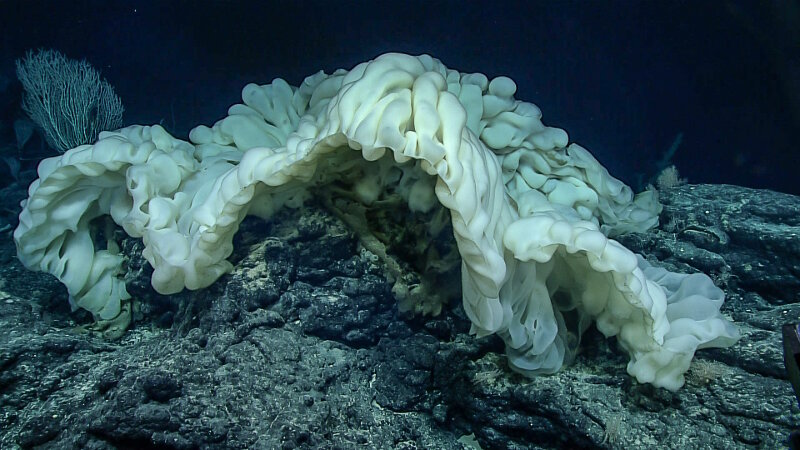
This new species of sponge has only ever been seen twice before in the Northwest Hawaiian Islands. To see it here in the Musicians Seamounts at Schumann Seamount indicates a connection between the two regions. Image courtesy of the NOAA Office of Ocean Exploration and Research, Deep-Sea Symphony: Exploring the Musicians Seamounts. Download larger version (jpg, 1.6 MB).
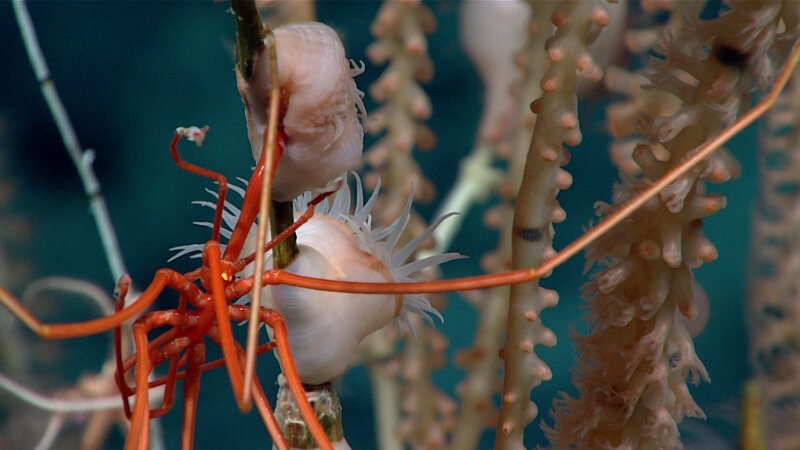
A sea spider feeds on an anemone that had colonized a bamboo coral branch at Shostakovich Seamount. Image courtesy of the NOAA Office of Ocean Exploration and Research, Deep-Sea Symphony: Exploring the Musicians Seamounts. Download larger version (jpg, 963 KB).
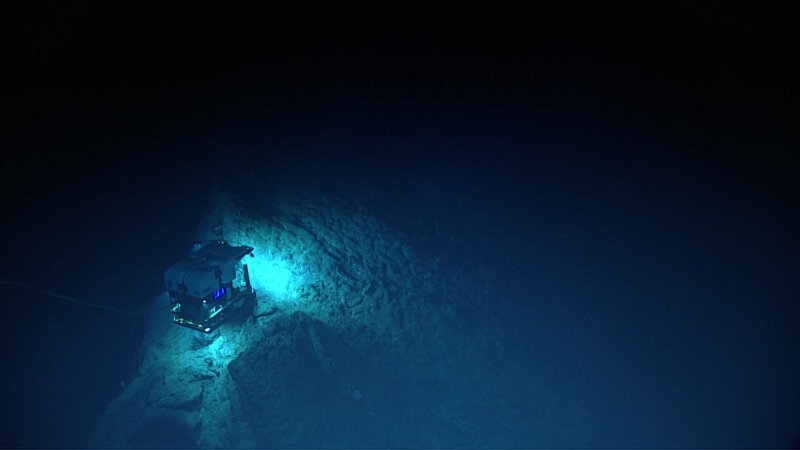
ROV Deep Discoverer explores the edge of a sharp ridge feature at Mozart Seamount. Image courtesy of the NOAA Office of Ocean Exploration and Research, Deep-Sea Symphony: Exploring the Musicians Seamounts. Download larger version (jpg, 358 KB).
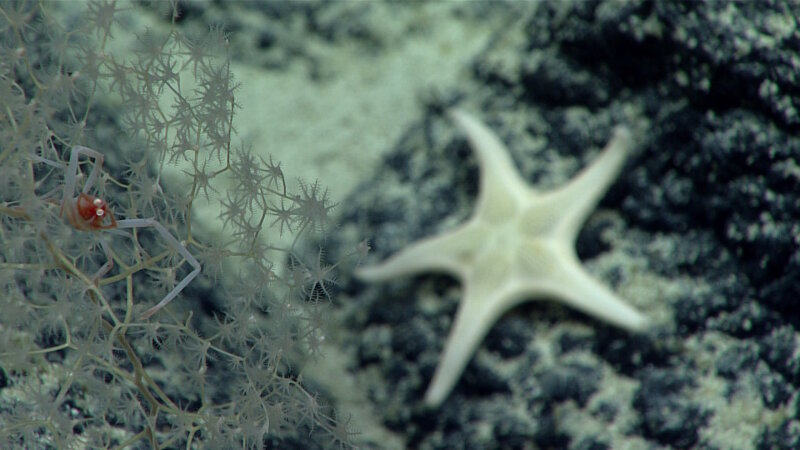
Deep-sea corals and sponges provide habitat to a number of organisms. Using ROV Deep Discoverer’s high-definition cameras, we are able to see even the smallest associates, like this squat lobster on a Chyrsogorgia colony. Image courtesy of the NOAA Office of Ocean Exploration and Research, Deep-Sea Symphony: Exploring the Musicians Seamounts. Download larger version (jpg, 948 KB).
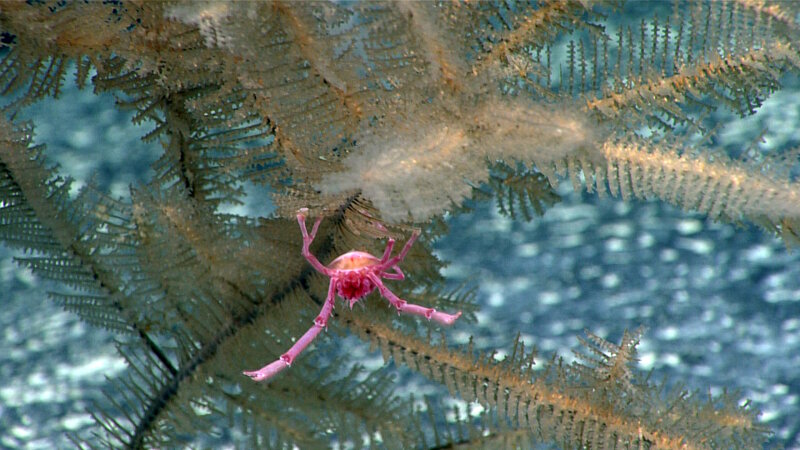
Everyone loves a good squat lobster! This potentially new species was observed on a black coral at Liszt Seamount. Image courtesy of the NOAA Office of Ocean Exploration and Research, Deep-Sea Symphony: Exploring the Musicians Seamounts. Download larger version (jpg, 1.6 MB).